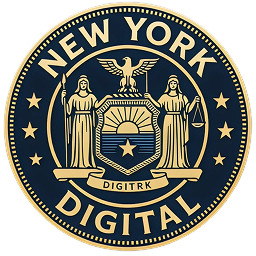A Design Code
The Historical Parallel
In 1900, faulty wiring was killing people. Buildings burned down regularly because everyone had their own creative interpretation of how electricity should work. Then we invented the National Electrical Code. Suddenly, your house not burning down became the default expectation, not a lucky accident. Fast forward to 2025: We're living through the exact same crisis, except this time it's digital. And yes, it's killing people.
The Hidden Crisis
Teen suicide rates correlating with social media adoption. Car accidents from notification addiction. Mental health crises from algorithmic manipulation. Deaths of despair linked to digital isolation. Dark patterns aren't just annoying—they're lethal. That infinite scroll isn't an accident. That 3am notification is carefully calculated. That "are you sure you want to quit?" popup was designed by someone who studied casino psychology. We regulated cigarettes for less.
Digital Building Code Standards
Imagine if every website had to meet basic safety standards, just like buildings. Digital fire exits: clear logout buttons, actual data deletion, one-click unsubscribe that works. Safety rails: time-spent warnings after 2 hours, mandatory cool-down periods, age-appropriate design requirements. Building materials: no dark patterns, transparent algorithms, accessibility by default. Because discrimination is a safety issue.
The Working Precedent
We didn't wait for the free market to stop electrocuting people. We created standards, trained inspectors, made it illegal to wire houses with garage scraps. The National Electrical Code wasn't anti-innovation—it made innovation safer. It turned electricity from dangerous luxury into boring, reliable infrastructure. That's exactly what digital design needs.
Simple Core Standards
Just like electrical code boils down to "don't start fires," digital design code would focus on basics. Don't manipulate: no exploiting psychological vulnerabilities. Don't trap: easy entry, easier exit. Don't discriminate: accessible and fair by default. Don't deceive: what you see is what you get. Don't exhaust: respect human limits. This isn't anti-tech. It's pro-human.
The Urgent Reality
Every day we wait, another teen stares at their phone until 4am. Another elderly person loses money to deceptive interfaces. Another family fractures over algorithmic radicalization. We're not talking hypothetical harm—we're talking about your nephew who can't put down his phone, your mom who fell for dark pattern subscriptions, your friend whose mental health cratered from algorithmic targeting. We have the precedent, the technology, the moral obligation. What we need is political will to say: Enough people have died. Time for a code.
And here's the short summary:
Just as the National Electrical Code stopped buildings from burning down in 1900, we need a Digital Design Code to stop apps and websites from causing real harm—because dark patterns, infinite scrolls, and algorithmic manipulation are killing people.
